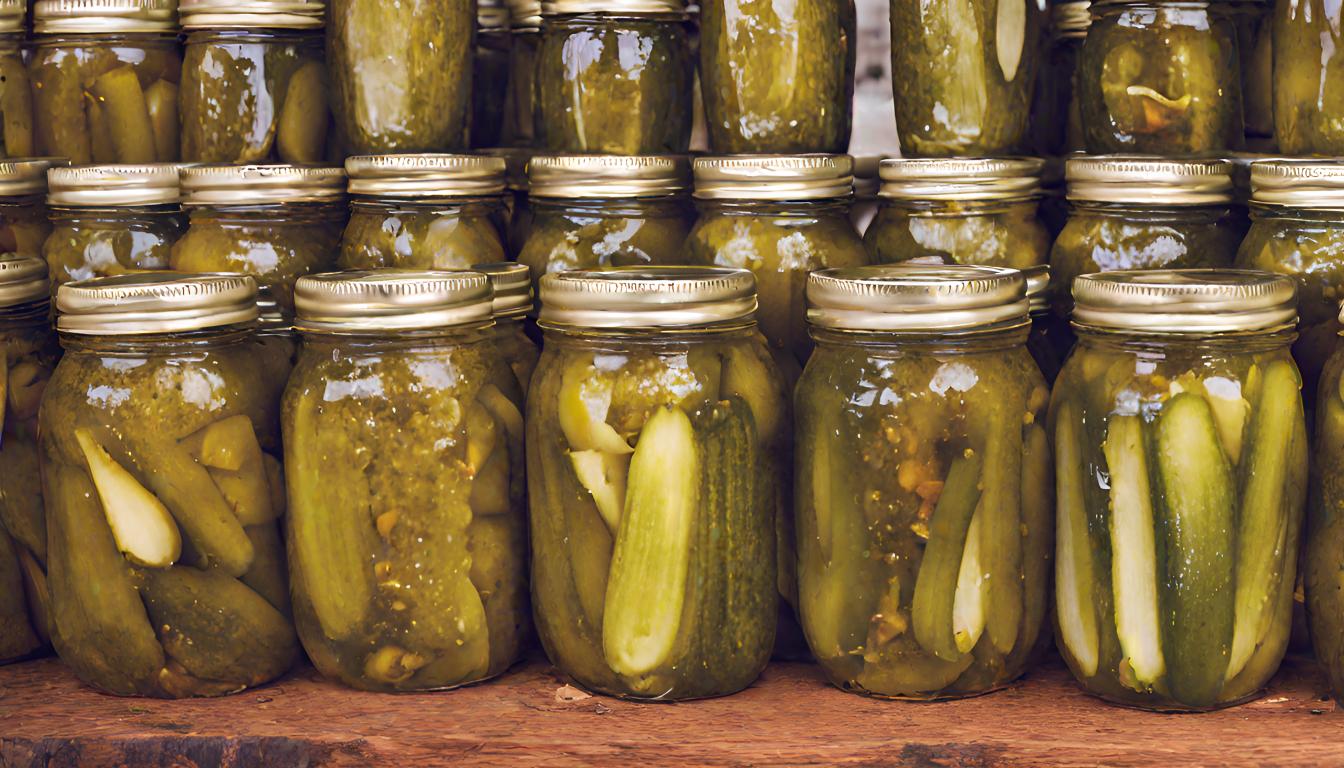Diving into traditional culinary arts, we’re captivated by the craft of pickling, especially making old-fashioned 7-day pickles. This historic method preserves cucumbers, turning them into crunchy, tangy delights. Recently, traditional pickling methods have seen a resurgence. Food enthusiasts and home cooks want to reconnect with food preservation roots. This article will guide you through making 7-day pickles. We’ll cover the historical significance of pickling and the steps to create these delicious morsels. Prepare to embark on a pickling adventure that promises success and enjoyment in equal measure.
The History of Pickling and the Origins of Old-Fashioned 7-Day Pickles
The art of pickling, including the tradition of making old-fashioned 7-day pickles, is as ancient as civilization itself, with roots tracing back over 4,000 years. Initially, the process served as a necessity for preserving food, enabling ancient peoples to store surplus produce for leaner times and long journeys. Over the centuries, pickling evolved beyond a mere survival technique to become a cherished culinary tradition across various cultures. From the garlicky dill pickles of Eastern Europe to the spicy kimchi of Korea, and not to forget the sweet tang of old-fashioned 7-day pickles, pickled foods have become a staple in global cuisines, celebrated for their ability to enhance flavors and add a refreshing crunch to meals.
Why Old-Fashioned 7-Day Pickles Stand Out
Among the myriad of pickling methods, the old-fashioned 7-day pickle recipe holds a unique place. This method distinguishes itself not just by the duration but by the meticulous process that imbues the cucumbers with a depth of flavor and crispness unmatched by quicker pickling techniques. The 7-day process involves a daily nurturing of the cucumbers, gradually transforming them through stages of brining, spicing, and sweetening. This week-long commitment to the craft of pickling pays off in the form of pickles that are not only a delight to the palate but also a testament to the patience and care invested in their creation.
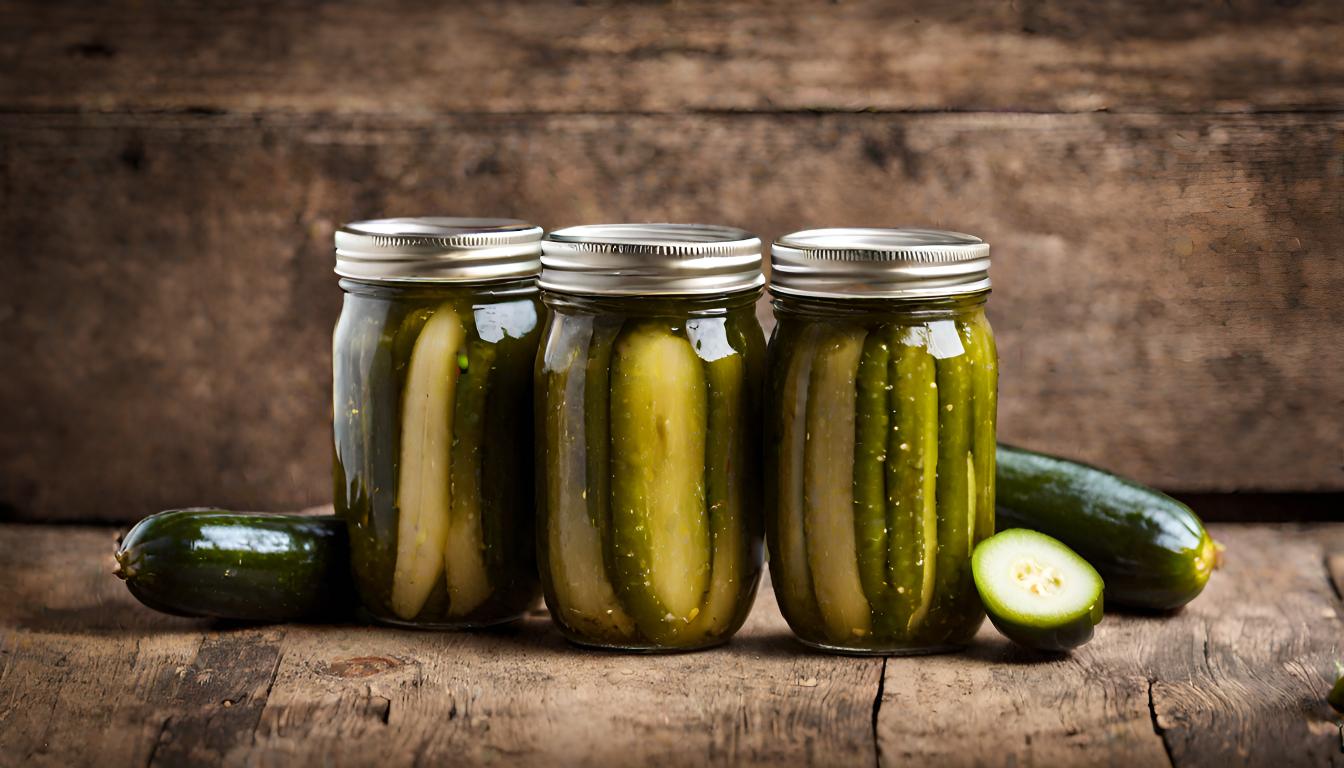
In the next section, we’ll delve deeper into what makes 7-day pickles a unique culinary treasure and explore the process that makes these pickles so special. Stay tuned as we uncover the secrets behind the distinct taste profile and the steps involved in bringing this old-fashioned delicacy to life.
Part 2: Understanding Old-Fashioned 7-Day Pickles
What Makes Old-Fashioned 7-Day Pickles Unique
The charm of old-fashioned 7-day pickles lies in their complex flavor profile and the delightful crunch that greets you with each bite. Unlike quick pickles that are ready in a day or two, old-fashioned 7-day pickles undergo a gradual transformation, allowing the flavors to deepen and meld beautifully. This slow process, rooted in tradition, involves daily care and attention, which imbues the pickles with a taste that’s both nostalgic and nuanced. The sweetness is not just a surface note but is intricately woven with the tanginess of the vinegar and the warmth of the spices, creating a symphony of flavors that is both balanced and bold.
The Process Overview
The journey of making old-fashioned 7-day pickles begins with selecting the freshest cucumbers, which are then cleaned and cut, ready to embark on their week-long transformation. The process is characterized by a series of steps that each play a crucial role in flavor development:
- Brining: The cucumbers are first soaked in a saltwater brine, drawing out moisture to ensure a crisp texture.
- Spicing: After the initial brining, the cucumbers are introduced to a blend of pickling spices, infusing them with aromatic flavors.
- Sweetening: The final step involves sweetening the brine, balancing the spices and vinegar’s sharpness with a subtle sweetness that defines old-fashioned 7-day pickles.
This meticulous process, requiring patience and precision, rewards you with pickles that are not just a condiment but a culinary experience, evoking memories of pickles from a bygone era.
In the next part, we will delve into the essential ingredients and equipment needed to bring these old-fashioned 7-day pickles to life. From the specific types of cucumbers that work best to the pickling spices that define their flavor, we’ll ensure you’re well-equipped to start this rewarding pickling journey.
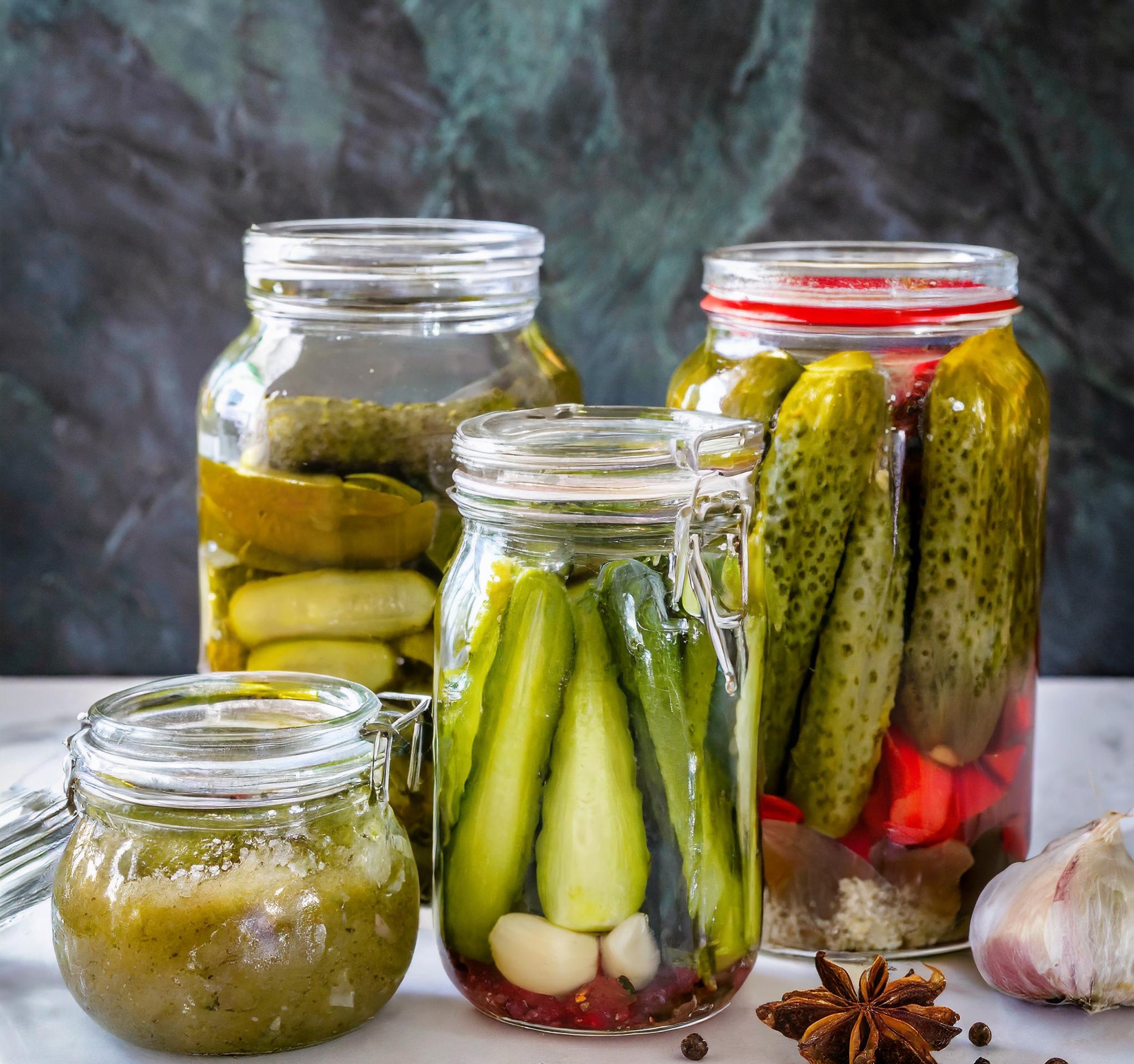
Continuing our exploration into crafting old-fashioned 7-day pickles, the next step is to gather all necessary ingredients and equipment. This preparation is crucial, as having everything on hand will streamline the pickling process, making it both enjoyable and efficient. Let’s delve into the specifics required to bring these delightful pickles to life.
Part 3: Ingredients and Equipment for Old-Fashioned 7-Day Pickles
Necessary Ingredients
The creation of old-fashioned 7-day pickles relies on a blend of simple, yet specific ingredients. Each component plays a vital role in achieving the perfect balance of flavors and textures:
- Cucumbers: The foundation of any pickle recipe. For 7-day pickles, select fresh, firm cucumbers, preferably of a smaller variety like Kirby, known for their crisp texture.
- Salt: Essential for the brining process. Use non-iodized pickling salt to avoid any cloudiness in the brine and ensure crispness.
- Vinegar: Acts as the preservative. White vinegar is typically used for its clear color and sharp taste, contributing to the pickles’ tangy flavor.
- Sugar: Counterbalances the vinegar’s acidity, adding a subtle sweetness characteristic of 7-day pickles.
- Pickling Spices: A blend including mustard seeds, coriander, cloves, and allspice berries. These spices infuse the pickles with their distinctive aromatic flavors.
- Alum: A pinch of alum can be added to enhance the crispness of the pickles, though its use is optional and should be done sparingly.
- Water: The medium for the brine. Use filtered or distilled water to ensure purity and clarity in the final product.
Required Equipment
Having the right tools not only makes the pickling process easier but also more enjoyable:
- Large Glass or Ceramic Containers: For the initial brining and soaking of cucumbers. It’s important to use non-reactive containers to prevent any unwanted chemical reactions.
- Mandoline Slicer or Sharp Knife: For evenly slicing the cucumbers. Consistency in thickness is key for uniform pickling.
- Measuring Cups and Spoons: Precision is crucial in pickling, as the balance of flavors depends on accurate measurements.
- Large Pot: Needed for preparing the brine and boiling the pickling solution.
- Jars with Lids: Sterilized canning jars are essential for storing the pickles. Ensure they are properly cleaned and prepared before use.
- Canning Funnel and Tongs: These tools help in packing the pickles into jars and handling hot equipment safely.
With your ingredients and equipment ready, you’re poised to begin the rewarding journey of making old-fashioned 7-day pickles. This process, steeped in tradition, not only yields a delicious result but also connects us to generations of picklers who have preserved not just food but a piece of culinary heritage.
In the forthcoming section, we will walk through the day-by-day process of making 7-day pickles, from the initial preparation to the final touches that seal the flavor and crunch of this timeless delicacy. Stay tuned for a detailed guide that will ensure your pickling adventure is both successful and enjoyable.
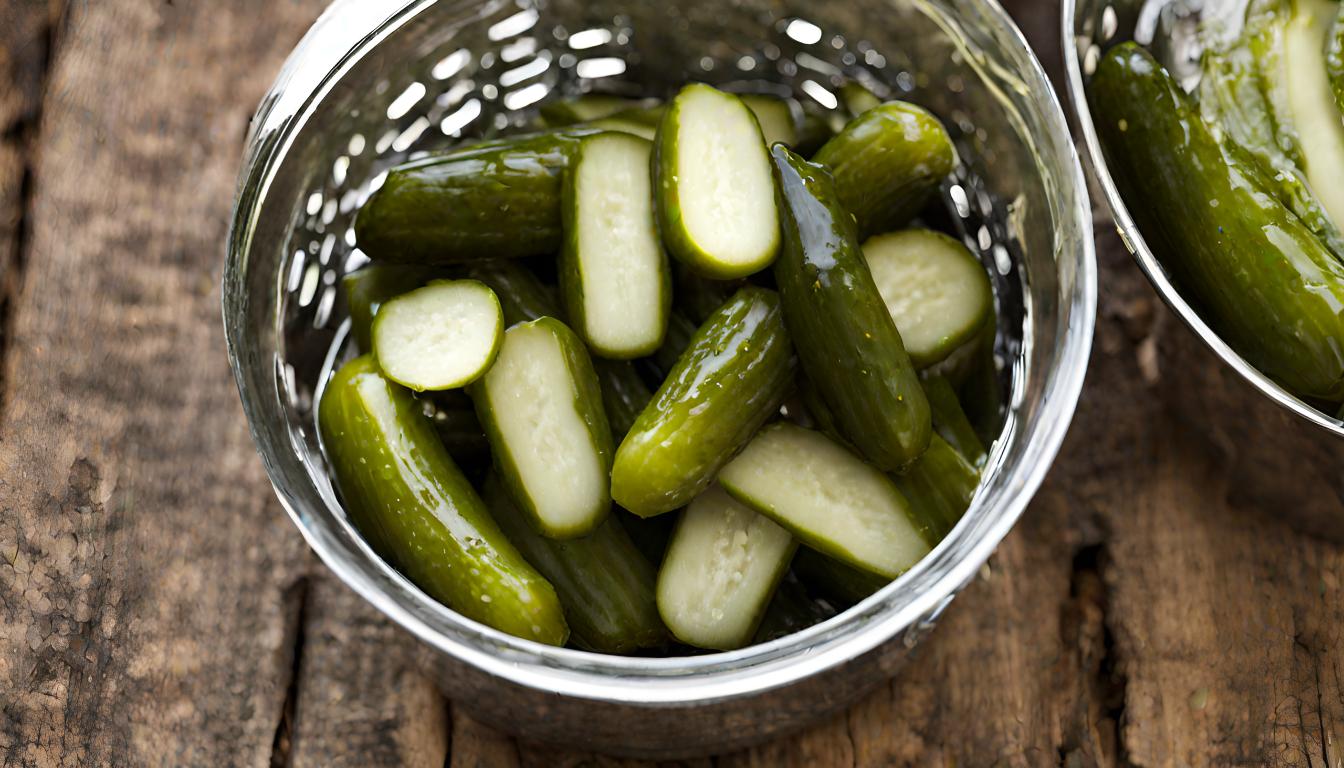
Embarking on the day-by-day journey to create old-fashioned 7-day pickles is a venture into the heart of traditional pickling. This detailed guide will walk you through each step, ensuring that by the end of the week, you have jars filled with crunchy, tangy delights that are as rewarding to make as they are to eat.
Part 4: The 7-Day Pickle Recipe
Day 1-3: Preparing and Brining
Day 1: Begin by thoroughly washing your cucumbers to remove any dirt or pesticides. Cut them into your desired shape, whether slices for sandwiches or spears for snacking. Place these in a large, non-reactive container and cover with a brine solution made from water and pickling salt. This initial soak starts the crucial process of drawing moisture out of the cucumbers, setting the stage for the crisp texture we’re aiming for.
Day 2: Drain the cucumbers from the initial brine, rinse them under cold water, and then return them to the container with a fresh batch of brine. This step helps to further the fermentation process, beginning to introduce that tangy flavor characteristic of pickles.
Day 3: Once again, drain and rinse the cucumbers. Today, you’ll mix up a new brine, this time incorporating some of the pickling spices to start layering in those complex flavors. The cucumbers go back into the container, submerged in this spiced brine, to continue their transformation.
Day 4-6: Seasoning and Flavoring
Day 4: It’s time to introduce sweetness into the mix. Drain the cucumbers from the spiced brine and prepare a new mixture, this time adding sugar to the brine along with the remaining pickling spices. This sweetened brine is what begins to give old-fashioned 7-day pickles their distinctive taste.
Day 5-6: Let the cucumbers sit in the sweetened brine, allowing the flavors to meld. The sugar, spices, and vinegar work together to create a rich, layered flavor profile that is the hallmark of these pickles.
Day 7: Finishing Touches
On the final day, your pickles are nearly ready. Prepare your canning jars by sterilizing them in boiling water. Drain the cucumbers from their brine, pack them into the jars, and cover them with a final boil of the sweetened, spiced brine, leaving a small space at the top of each jar. Seal the jars while hot to ensure they are airtight.
Resting Period
After sealing, it’s important to give your pickles time to rest. This resting period allows the flavors to continue developing, resulting in a deeper, more harmonious taste. Store your sealed jars in a cool, dark place and give them at least a week before opening to enjoy the full flavor of your old-fashioned 7-day pickles.
This week-long process, a blend of patience, tradition, and culinary craft, results in pickles that are a testament to the art of preservation. Each crunchy bite is a link to a time-honored method of making food last longer and taste better.
In the next section, we’ll share some pro tips and tricks to ensure your pickles turn out perfectly every time, enhancing the flavor, texture, and longevity of your 7-day pickles. Stay tuned for insights that will elevate your pickling game to new heights.

As we delve into the finer points of crafting old-fashioned 7-day pickles, it’s essential to arm yourself with tips and tricks that elevate your pickling from good to exceptional. This part of the guide focuses on expert advice to ensure your pickles boast the perfect texture, flavor, and longevity.
Part 5: Tips and Tricks for Perfect Old-Fashioned 7-Day Pickles
Achieving perfection in pickling, especially with a recipe as nuanced as old-fashioned 7-day pickles, involves more than just following steps. It’s about mastering the subtleties that influence the final product’s quality. Here are some seasoned tips to guide you:
Ensuring Crispness
- Cold Soak: Begin by soaking your cucumber slices or spears in ice water for several hours before starting the brine process. This step can significantly firm up the cucumbers, leading to a noticeably crisper pickle.
- Use of Alum: Adding a pinch of alum on Day 3 is a traditional method to enhance crispness. However, it’s crucial to use it sparingly to avoid imparting any bitterness to your pickles.
- Freshness Matters: The key to crunchy pickles starts with the freshness of the cucumbers. Opt for cucumbers that are firm, vibrant, and free of blemishes, using them as soon after picking as possible.
Flavor Enhancements
- Spice Creatively: Don’t hesitate to personalize your batch with additional spices or herbs. Experimenting with ingredients like fresh dill, garlic cloves, or even a cinnamon stick can introduce delightful new dimensions to your pickles.
- Sugar Adjustments: While the recipe provides a guideline for sweetness, feel free to adjust the sugar level to suit your taste preferences. A little more sugar can enhance the sweetness, but balance is key to maintain the signature tangy-sweet profile.
Longevity Tips
- Proper Sealing: Ensuring an airtight seal on your jars is critical for the longevity of your pickles. Process the sealed jars in a boiling water bath for 10 minutes to secure the seal and extend shelf life.
- Storage: Store your sealed old-fashioned 7-day pickles in a cool, dark place. Once opened, refrigeration is necessary to keep the pickles crisp and prevent spoilage.
Experimentation is Key
- Batch Variations: Embrace the opportunity to tweak small variations across different batches. This approach allows you to refine the recipe to your liking and can lead to the discovery of your perfect pickle.
Incorporating these tips into your pickling process not only ensures the creation of old-fashioned 7-day pickles that stand out for their quality and taste but also deepens your engagement with the craft of pickling. Remember, the journey of pickling is as rewarding as the delicious results.
Next, we’ll explore common mistakes to avoid in the pickling process. This guidance will further smooth your path to successful pickling, ensuring your efforts yield perfectly preserved delights. Stay tuned for invaluable insights that will enhance your pickling expertise.
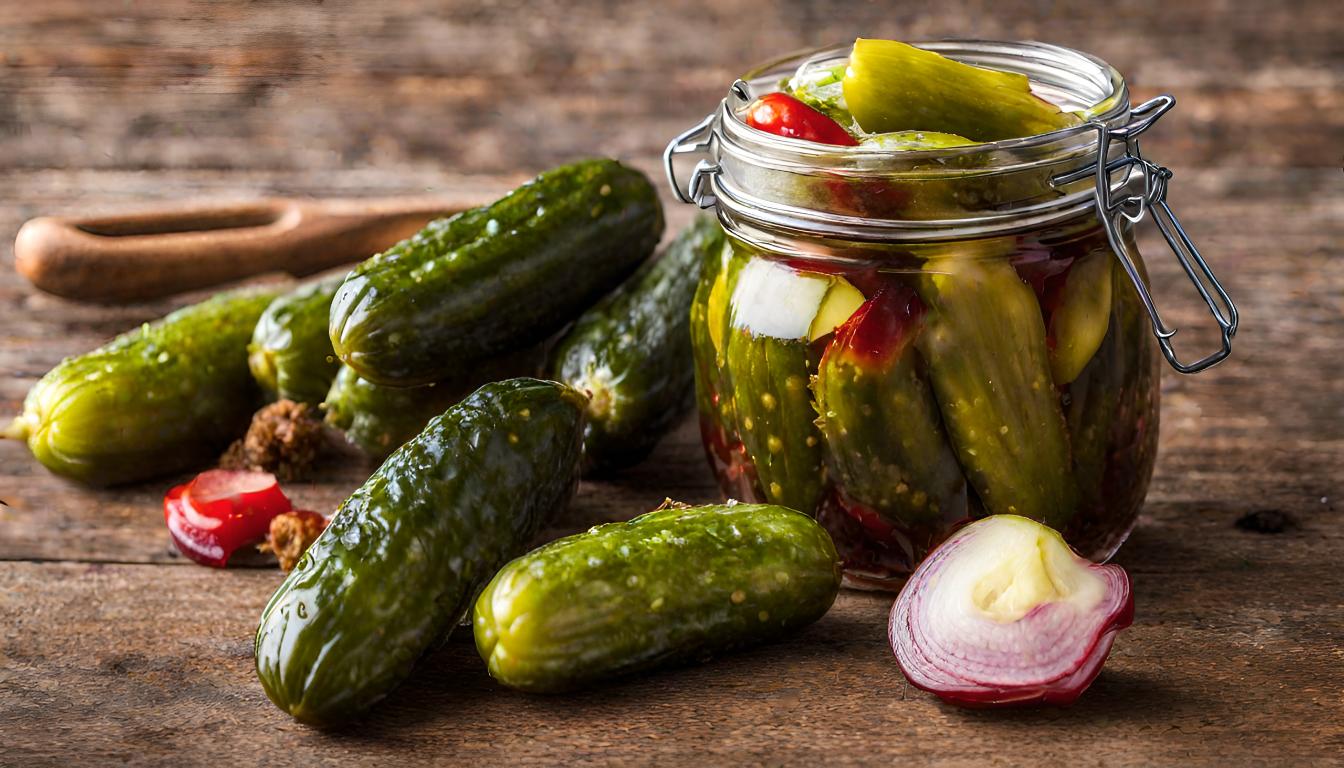
Navigating the intricate process of creating old-fashioned 7-day pickles can be a rewarding experience, yet it’s not without its pitfalls. Awareness of common mistakes and how to avoid them can significantly enhance the quality of your pickles, ensuring each batch is as delightful as intended. Let’s explore some of these common pitfalls and how to steer clear of them.
Part 6: Common Mistakes to Avoid in Making Old-Fashioned 7-Day Pickles
Overlooking Cucumber Quality
- The Mistake: Using overripe or improperly stored cucumbers can lead to soft, mushy pickles.
- The Solution: Always choose fresh, firm cucumbers for pickling. If possible, use cucumbers within a day or two of harvesting for the best texture.
Inaccurate Brine Composition
- The Mistake: Incorrect ratios of vinegar, water, and salt can disrupt the pickling balance, affecting both flavor and preservation.
- The Solution: Measure ingredients precisely and follow the recipe closely. Adjustments can be made in subsequent batches once you’re familiar with the basic process.
Rushing the Process
- The Mistake: Impatience can tempt you to shorten the 7-day process, which compromises the development of flavors and textures.
- The Solution: Commit to the full 7-day process. The gradual transformation is key to achieving the depth of flavor and crispness that makes these pickles special.
Neglecting Jar Sterilization
- The Mistake: Failing to properly sterilize jars and lids can introduce bacteria, risking spoilage.
- The Solution: Sterilize all canning equipment by boiling for at least 10 minutes. This step is crucial for safe, long-term storage.
Ignoring the Resting Period
- The Mistake: Eating the pickles immediately after the 7-day process without allowing them to rest.
- The Solution: After sealing, let the pickles rest for at least a week in a cool, dark place. This resting period allows flavors to meld, enhancing the overall taste.
By avoiding these common mistakes, you’re well on your way to creating old-fashioned 7-day pickles that not only taste great but also capture the essence of traditional pickling. Each batch offers an opportunity to refine your technique and produce a product that is both delicious and visually appealing.
In the next section, we’ll address some frequently asked questions that arise during the pickling process. This FAQ will provide additional insights and tips to help you master the art of making old-fashioned 7-day pickles, ensuring your questions are answered and your pickling journey is as smooth as possible. Stay tuned for valuable information that will further enhance your pickling expertise.
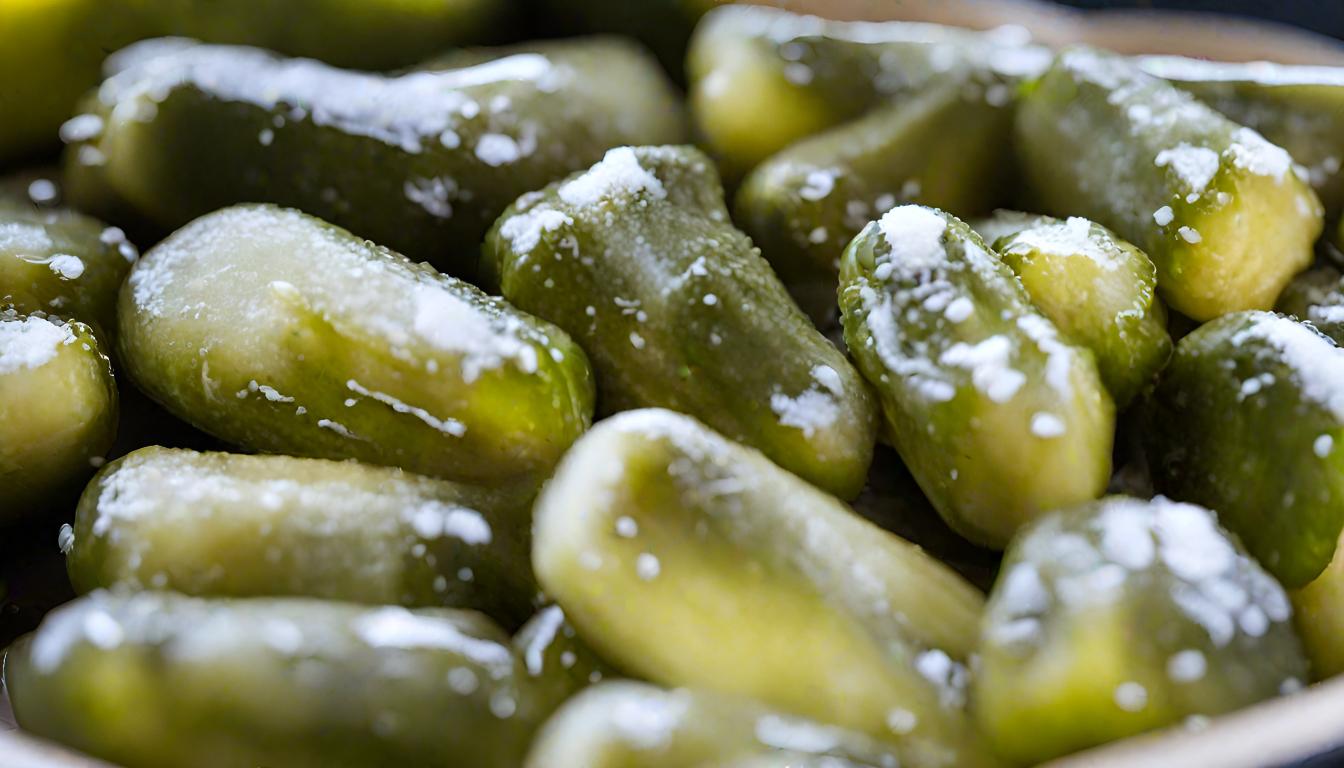
As we conclude our comprehensive guide to making old-fashioned 7-day pickles, it’s important to address some of the most common questions and concerns that might arise during the pickling process. This section aims to clarify any lingering doubts, ensuring you feel confident and informed as you embark on your pickling adventures.
Part 7: FAQs on Making Old-Fashioned 7-Day Pickles
How Long Do Old-Fashioned 7-Day Pickles Last?
- Answer: When properly canned and sealed, old-fashioned 7-day pickles can last up to a year in a cool, dark place. Once opened, it’s best to keep them refrigerated and consume within two months for optimal taste and texture.
Can I Use Different Types of Cucumbers?
- Answer: Yes, while pickling cucumbers like Kirby are preferred for their crisp texture, you can experiment with other types. Just be aware that the texture and flavor might vary slightly.
What If My Pickles Turn Out Too Soft?
- Answer: Soft pickles can result from overripe cucumbers or not following the brining process correctly. Ensure you’re using fresh cucumbers and following each day’s instructions carefully. Adding grape leaves to the jars can also help maintain crispness due to their tannins.
Can I Adjust the Sweetness of the Pickles?
- Answer: Absolutely! Feel free to tweak the amount of sugar based on your preference. Just remember that significant changes might alter the balance of flavors, so adjust in small increments.
Is It Necessary to Process the Jars in a Water Bath?
- Answer: For long-term storage, processing the jars in a boiling water bath can ensure a better seal and prevent spoilage. This step is especially recommended if you’re new to canning or plan to store the pickles for an extended period.
Can I Make a Smaller Batch of Old-Fashioned 7-Day Pickles?
- Answer: Yes, the recipe can be easily scaled down. Just ensure to adjust all the ingredients proportionally to maintain the correct balance of flavors and brine.
By addressing these FAQs, we hope to have clarified some of the nuances involved in making old-fashioned 7-day pickles. Each question brings us closer to perfecting the art of pickling, ensuring every batch is as delightful as the last.
In closing, remember that making old-fashioned 7-day pickles is more than just a culinary endeavor—it’s a journey through time, connecting us with generations of picklers who have preserved not just food but a piece of cultural heritage. Whether you’re a seasoned pickler or a curious newcomer, the world of pickling offers endless possibilities for exploration, learning, and enjoyment.
So, as you look beyond the jar, remember that pickling is more than preserving cucumbers—it’s about preserving a piece of history, sharing it with others, and growing through the challenges it presents. May your pickles be crisp, your brine be flavorful, and your kitchen be a place of endless culinary adventures.
Happy pickling, and here’s to the many jars of old-fashioned 7-day pickles that await you on your journey.
Conclusion
In wrapping up our journey through the art of making old-fashioned 7-day pickles, we’ve rediscovered the joy of connecting with traditional culinary practices. This process, steeped in patience and precision, not only yields a deliciously tangy and crunchy treat but also serves as a reminder of the value of handmade, slow-crafted foods in our fast-paced world. By embracing the meticulous steps and the careful balance of flavors involved in creating these pickles, we honor the generations of knowledge passed down to us. Whether you’re a seasoned pickler or a newcomer to the craft, the creation of old-fashioned 7-day pickles offers a rewarding experience that goes beyond the kitchen, enriching our appreciation for the simple, yet profound, pleasures of cooking. Happy pickling, and may your jars always be full of these delightful, time-honored treasures.
